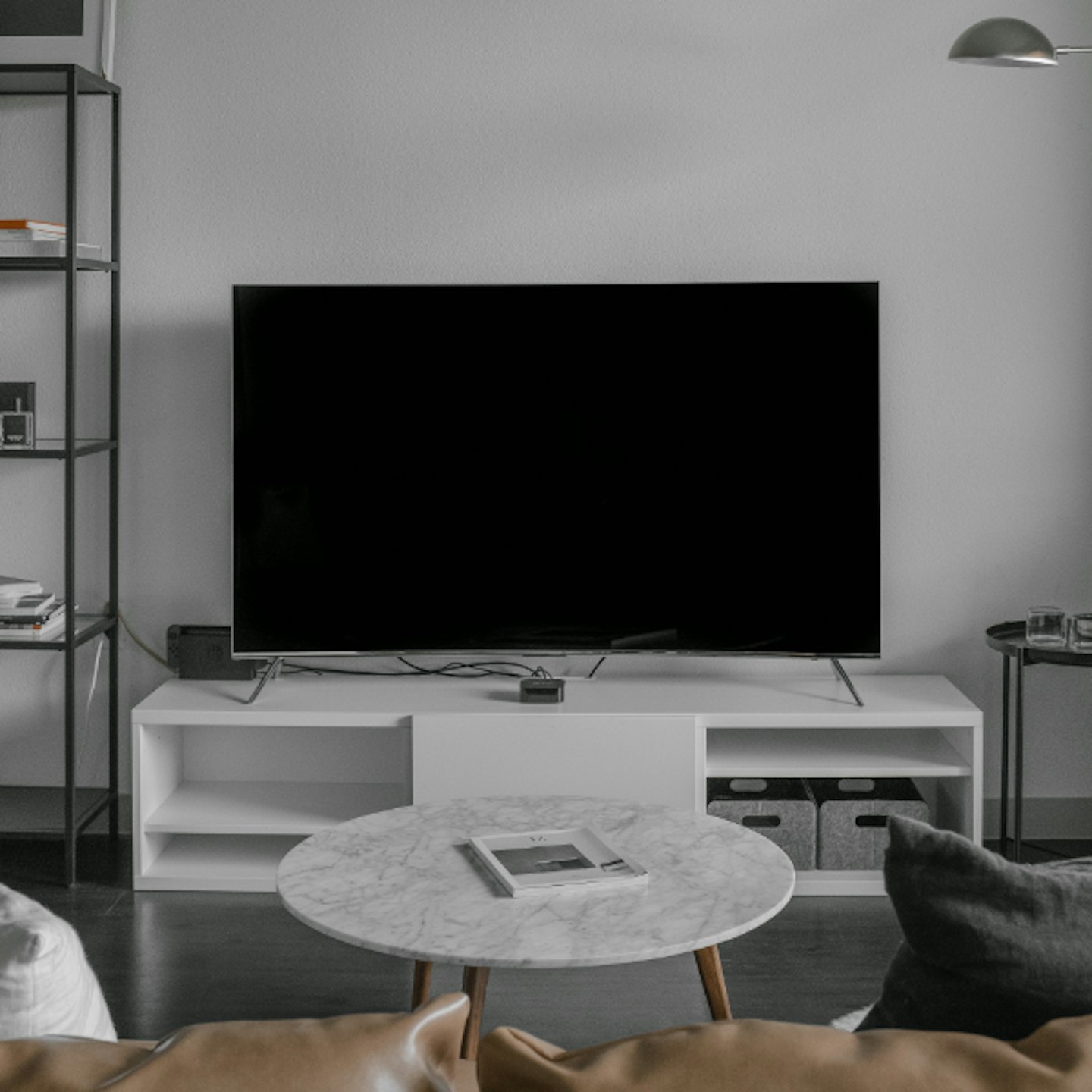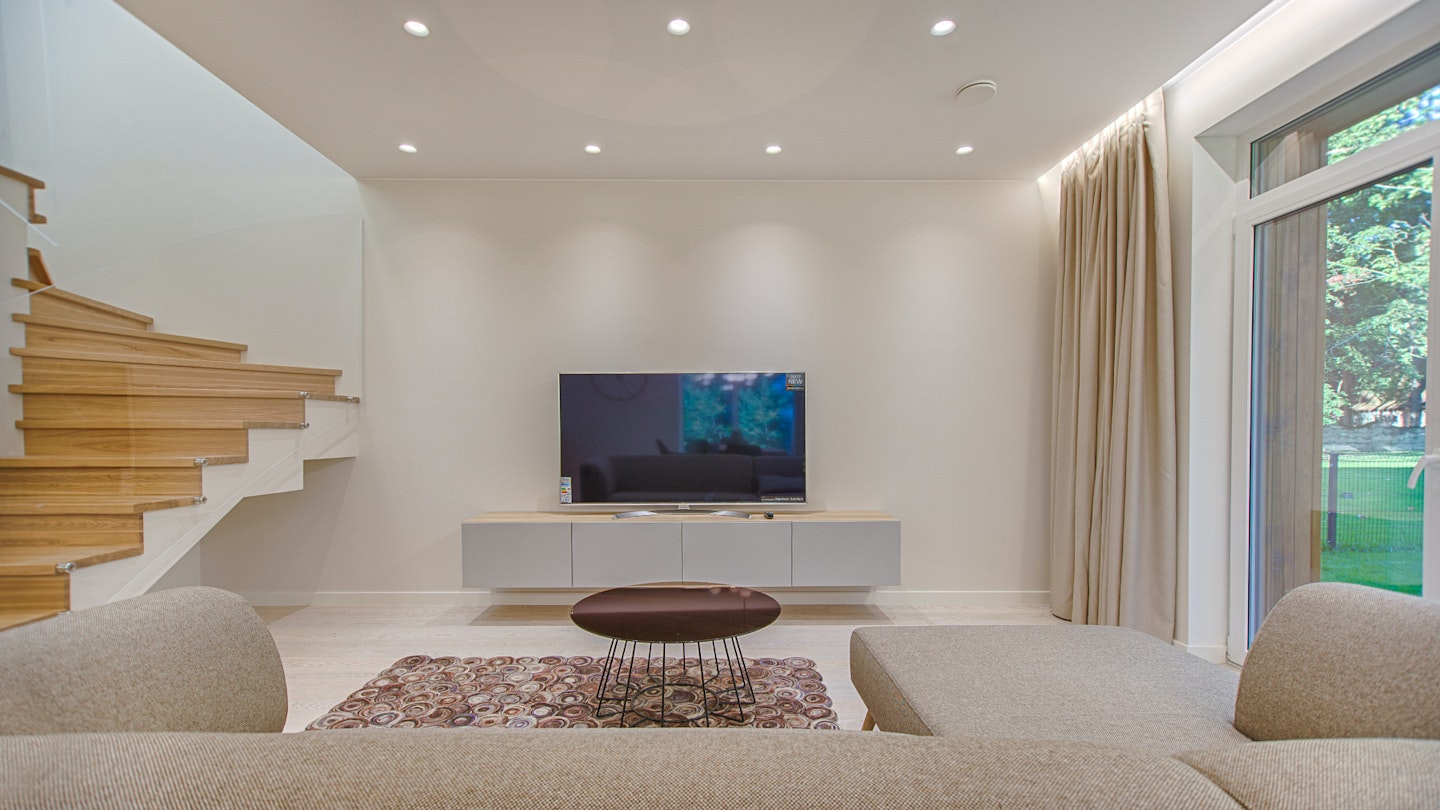Buying a television isn’t your run of the mill purchase – at least it shouldn’t be. Whether you’re moving into a new house, or it's just time for that upgrade you’ve been talking about, choosing the correct TV is crucial. After all, it’s where we spend most (or all) of our down time.
Once you’ve nailed it down to what brand you’d like to go for, there’s only one million-dollar question left to answer: what size TV do I need?
The short answer: it depends. The size TV that you require will depend on many factors, such as how close to the screen you will be sitting, the size of your room, your budget, among other things.
Buying the wrong TV size can have a few consequences; if you go too small, you may have trouble seeing and find yourself squinting, but if you go too big, the TV could overcrowd your space. It's safe to say that when you’re in the process of choosing TV – size matters.
To make things simpler, we’ve created a quick and easy guide to help you decide what size you should go for.
What size TV do I need?
Here’s a rough guide to give you an idea of the best TV size in relation to the minimum seating distance when viewing HD content:
32 inches – 1.2 metres (3.9 feet)
40 inches - 1.5 metres (5 feet)
50 inches – 1.9 metres (6.5 feet)
60 inches – 2.2 metres (7.5 feet)
75 inches – 2.8 metres (9.5 feet)
Resolution guide:
HD: 1280×720
Full HD: 1920×1080
4K Ultra HD: 3840×2160
8K Ultra HD: 7,680x4,320
Comprehensive TV size guide
Small TVs (32-inches and below)
While huge 60-inch displays with 4K resolutions might be buzzing at the moment, there are many reasons to go for a more compact TV.
Smaller TVs are suitable for kitchen, bedroom or even desktop use, and typically range from 24-inches for a very small option, to around 32-inches at the upper limit.
These TVs are best suited to a one-person household, or for those who watch TV very occasionally and prefer to keep the budget in control. Smaller TVs are also great if you don’t want a huge screen dominating your whole room, particularly if your living space is limited in size.
Having said that, opting for a small TV will likely impact the quality of your viewing experience. TVs below 32-inches are not available in 4K UHD, given that the display is too small for the increase in detail to be noticeable. That means you’ll be watching content in either Full HD (1080p) or regular HD (720p) display quality.
If viewing content at top-notch quality is not currently a priority to you, look no further - the standard resolution will work great. However, if you’re on the hunt for something a little more immersive with superior resolution, it would be worth going a size up.
Medium TVs (40 to 50-inches)
Next up on our ladder is the handy midway point, the medium-size TVs.
Medium-size TVs are a very popular choice given that they provide a perfect in-between. For example, a43-inch TV is a great option for a modestly sized living room or bedroom; big enough to allow for 4K resolution, but small enough to prevent dominating a space.
Medium TVs also allow you to stick to reasonable budget, without sacrificing viewing quality. Whether it’s a HDR reinforced system or full-blown 4K device, mid-size TVs will give you that extra something in terms of viewing quality. And as Amazon Prime Video and Netflix are increasingly offering streamable 4K content, it may well be worth it.

Big TVs (50 to 75-inches)
If you’re a “go big or go home” type of person, a larger TV will be the option for you.
Larger screens are in huge demand, and it’s easy to see why. Big TVs take picture-quality to a next level, offering a completely immersive experience in which you can enjoy all your favourite shows and movies.
Bigger TVs are ideal if you have a big open-plan living room, or if you frequently entertain guests for movie nights or live sporting events, be it boxing or football. Gamers may also choose to size up, as large screens also allow for more realistic and enjoyable gameplay.
We know – the difference between a 50-inch and 75-inch TV is big, but the decision ultimately comes down to how much space you have, how many people are watching and how much you’re willing to spend.
If your budget is on the higher end, you’ll be glad to know that added features such as OLED are available for bigger screens, a technology that provides utmost cinematic quality, with deeper colours and improved brightness.
Related: Best 50-inch TVs | Best 60-inch TVs | Best 65-inch TVs
How can I measure TV size?
Retail listings for new TVs will clearly state the screen's size. The first numbers of a TVs model number may also tell you the size the screen in inches.
If you'd like to know the size of your current TV, it may be written on the back of the TV, or in the user manual. If you’re still unsure, you can always measure it yourself.
If you’re looking to measure your current TV, it's really simple. TV sizes are measured diagonally from corner to corner - all you need to do is take a tape measure and start from the upper left-hand corner to the bottom right-hand corner, without including the bezels.
Don't miss out on the absolute best TVs this year, they're the absolute cutting edge - our list has gamers, film-buffs and binge-watchers completely covered.
What TV size should I buy?
As we have already stated, the right TV size for you will depend on a lot of different factors.
The most important thing to think about is how far you will be sitting from your TV, a factor that will depend on your room size. For example, for a 40-inch standard 1080p HD TV, it's recommended that you sit between 1.5 to 2.5 metres away from the screen. If your TV is larger, at 55-inches, the seating distance recommended is between 2 and 3.5 metres.
Of-course, if you opt for a 4K TV, the seating distance will be reduced. For a 40-inch 4K TV, the viewing distances falls to between 1 and 1.5 metres, and for a 55-inch TV between 1.3 and 2 metres. This is because the increased 4K TV quality means you can sit closer without causing eye strain or seeing pixels. Therefore, if your living room is a little tight in space, it may be worth opting for a medium-size screen with 4K TV.
Budget is the next most important factor. If your budget is tight and you’re looking for a table-top screen for your kitchen or desk, a small screen will be the right choice for you. However, if budget and room size allow for a medium or big TV, these will ultimately give you the optimal viewing experience.
Related: The best 4K TVs under £500
What size TV for gaming?
Bigger screens generally make for a more enjoyable gaming experience, but if you’re opting for a standard resolution big screen, this might mean a slower input lag and refresh rate.
The right size TV will also highly depend on your console. If your console is 4K TV compatible such as the PS5 and Xbox Series X, a bigger screen size between 40 and 60-inches will likely be the best option. If your console is older, supporting 1080p, TVs ranging from 32 to 40-inches would be a better fit.
Make sure to always keep in mind room size and viewing distance, as well as how many people will be playing at once.
